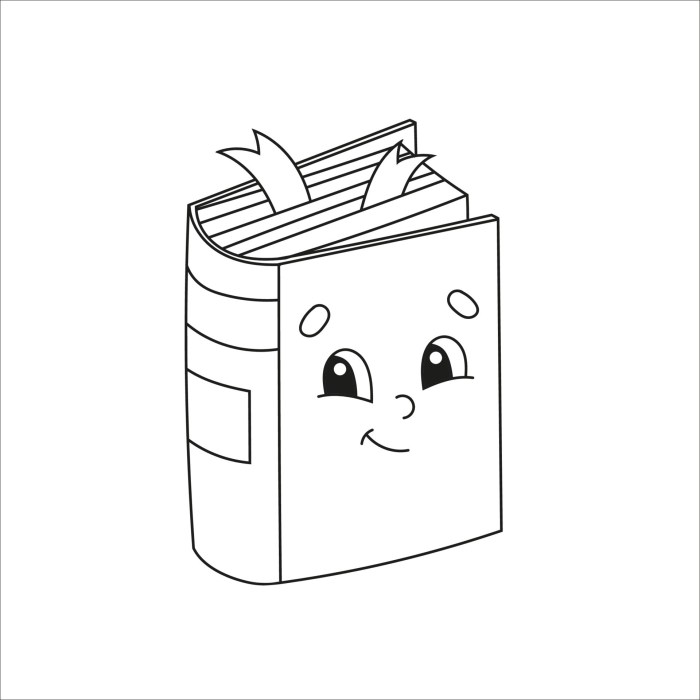Market Research

The success of a cartoon characters coloring book hinges on a precise understanding of its target audience – both the children who will use it and the adults who will purchase it. A thorough market research analysis is crucial to identify the specific needs and preferences of these groups, informing design choices and marketing strategies. This ensures the book resonates with its intended consumers and maximizes its market potential.
Target Audience: Children
The ideal age range for a cartoon characters coloring book spans broadly, from preschoolers (ages 3-5) to early elementary school children (ages 6-8). However, the specific characters featured will significantly influence the appeal to different age groups within this range. Younger children are often drawn to bright colors, simple shapes, and characters with easily recognizable features. Older children, on the other hand, might prefer more complex designs and characters from popular television shows or movies, reflecting their evolving cognitive and social development.
Interests vary widely, from animals and vehicles to superheroes and fantasy creatures, demanding a diverse range of character options to cater to this broad spectrum.
Target Audience: Parents and Guardians
Parents and guardians purchasing coloring books for their children typically prioritize several key characteristics. Safety is paramount; non-toxic inks and sturdy paper are essential considerations. Educational value is also important, with many parents seeking books that encourage creativity, fine motor skill development, and focus. Price is a significant factor, with parents looking for value for money. The popularity and familiarity of the featured cartoon characters play a considerable role; a book featuring beloved characters increases the likelihood of purchase.
The vibrant world of cartoon characters coloring books offers endless creative possibilities for children and adults alike. For those seeking a different aesthetic, exploring diverse representation is key, and a great resource is the black art coloring book , which showcases powerful imagery. Returning to cartoon characters, the simple lines and bold colors provide a relaxing and engaging activity, fostering creativity and self-expression.
Finally, the overall design and aesthetic appeal of the book influences purchasing decisions, reflecting parents’ own tastes and desires for high-quality children’s products.
Cartoon Character Popularity Across Age Demographics
The popularity of cartoon characters varies considerably across different age groups. Preschoolers might be captivated by characters from shows like “Peppa Pig” or “Bluey,” characterized by their simple storylines and relatable characters. Slightly older children (ages 6-8) might gravitate towards characters from action-adventure shows or animated films, such as those found in the Marvel Cinematic Universe or the Pixar universe.
Teenagers, however, might prefer characters from anime series or more mature animated shows, reflecting their developing preferences and interests. Understanding these shifting preferences is crucial for tailoring the content of the coloring book to specific age groups.
Preferred Cartoon Characters by Age Group
| Age Group | Character Example 1 | Character Example 2 | Character Example 3 |
|---|---|---|---|
| 3-5 years | Peppa Pig | Bluey | Paw Patrol Characters |
| 6-8 years | Spider-Man | Minions | Disney Princesses |
| 9-11 years | Miraculous Ladybug | Pokémon Characters | Roblox Avatars |
| 12+ years | Demon Slayer Characters | My Hero Academia Characters | Avatar: The Last Airbender Characters |
Content Creation

The alchemy of transforming beloved cartoon characters into engaging coloring book pages requires a delicate balance of artistic flair and commercial viability. The process involves careful character selection, mindful design choices, and a deep understanding of the target audience – children, primarily, but also the adults who will be coloring alongside them. The goal is to create pages that are both aesthetically pleasing and easily adaptable to different coloring styles and skill levels.
Character Selection and Licensing
Choosing the right characters is paramount. Public domain characters offer freedom, but popular, recognizable figures hold greater appeal. Navigating licensing agreements is crucial; it’s a complex legal landscape demanding careful consideration of usage rights, fees, and territorial restrictions. The following list presents ten popular cartoon characters suitable for a coloring book, acknowledging the inherent licensing complexities:
- Mickey Mouse (Disney)
- Bugs Bunny (Warner Bros.)
- Winnie the Pooh (Disney)
- Snoopy (Peanuts Worldwide LLC)
- Tom and Jerry (Warner Bros.)
- SpongeBob SquarePants (Nickelodeon)
- Hello Kitty (Sanrio)
- The Simpsons (20th Century Studios)
- Pokemon characters (The Pokémon Company)
- Powerpuff Girls (Cartoon Network)
Securing the necessary licenses involves direct contact with the copyright holders, negotiating terms, and adhering to strict usage guidelines. Failure to do so can result in significant legal repercussions.
Sample Page Layout and Design
Let’s imagine a page featuring three characters: Mickey Mouse, Minnie Mouse, and Pluto. Mickey and Minnie are positioned slightly overlapping, creating a sense of playful interaction. Pluto, in a dynamic pose, is placed off to the side. The line art style is simple, employing bold Artikels and minimal detail to facilitate easy coloring.The color palette for Mickey and Minnie is classic: primary colors for their attire (red for Mickey, yellow for Minnie), with varying shades of black for their Artikels.
Pluto’s palette uses earthy tones – browns, tans, and creams – to emphasize his canine nature. The background is left mostly blank, with a few simple, suggestive shapes to provide context without overwhelming the characters. The page utilizes a limited number of distinct line weights for visual clarity and emphasis.
Simplifying Complex Cartoon Characters
Transforming intricate cartoon characters into easily colorable line art necessitates a simplification process. This involves reducing the number of details, smoothing out complex curves, and streamlining the overall design. For example, the many tiny whiskers on a character might be reduced to a few bolder ones. Complex textures are replaced with simpler shading techniques. The aim is to retain the character’s essence while making it accessible to a wide range of coloring skill levels.
This process often involves digital tools, allowing for iterative refinement and precise adjustments to line weights and shapes.
Coloring Page Styles
Several styles cater to different preferences and skill levels.
- Simple Shapes: These pages feature large, easily colored shapes, ideal for younger children. Think bold Artikels and minimal detail, focusing on basic shapes to represent the characters.
- Intricate Details: These pages are more challenging, incorporating complex patterns, textures, and fine details within the character’s design, appealing to older children and adults.
- Scene-Based: These pages depict characters within a setting, adding environmental details and context to the coloring experience. This style allows for more creative freedom and can incorporate a wider range of colors and shading techniques.
Production & Distribution
Bringing a cartoon character coloring book to life involves a careful balancing act between quality, cost, and reach. The choices made during production and distribution directly impact the book’s success, determining its visual appeal, affordability, and ultimate accessibility to its target audience. A well-executed strategy in these areas can transform a charming concept into a tangible, profitable product.
Printing Methods
The selection of a printing method significantly influences the final product’s quality and cost. Offset printing, a traditional method, offers high-quality results, particularly for large print runs, due to its ability to reproduce fine details and vibrant colors. However, the initial setup costs can be substantial, making it less cost-effective for smaller runs. Digital printing, on the other hand, is more versatile and economical for smaller quantities, as it eliminates the need for printing plates.
While offering faster turnaround times, digital printing might not always match the color vibrancy and detail of offset printing, especially for complex illustrations. Another option is on-demand printing, which allows for printing only when orders are placed, minimizing storage and waste. However, per-unit costs tend to be higher than offset printing for larger quantities.
Distribution Channels
Reaching the intended audience requires a multi-pronged distribution strategy. Online platforms like Amazon, Etsy, and the publisher’s own website offer global reach and convenience. These channels allow for direct interaction with customers and the ability to track sales data efficiently. However, online sales often involve platform fees and competition from other sellers. Offline distribution involves partnerships with bookstores, toy stores, and other relevant retailers.
This approach provides a tangible presence and allows for direct engagement with potential customers, but requires establishing relationships with retailers and managing inventory effectively. Consider the example of a successful children’s book publisher who leverages both online and offline channels, securing distribution deals with major bookstore chains while also maintaining a strong online presence through their website and social media marketing.
Comparison of Printing and Distribution Methods
| Method | Printing | Distribution | Pros | Cons |
|---|---|---|---|---|
| Offset Printing | High-volume printing | N/A | High-quality print, cost-effective for large runs | High setup costs, less flexible for small runs |
| Digital Printing | On-demand and short runs | N/A | Cost-effective for small runs, fast turnaround | Lower print quality compared to offset, higher per-unit cost for large runs |
| On-Demand Printing | Print-on-demand | N/A | Minimal storage, low risk of unsold inventory | Higher per-unit cost, less control over print quality |
| Online Retailers (e.g., Amazon) | N/A | E-commerce | Global reach, convenient for customers, data tracking | Platform fees, competition |
| Offline Retailers (e.g., bookstores) | N/A | Physical stores | Tangible presence, direct customer interaction | Requires retailer relationships, inventory management |
Licensing Copyrighted Cartoon Characters, Cartoon characters coloring book
Securing the necessary licenses to use copyrighted cartoon characters is crucial to avoid legal issues. This process typically involves contacting the copyright holder, usually the animation studio or character’s owner, and negotiating a licensing agreement. The agreement will Artikel the permitted uses of the character, the licensing fee, and the duration of the license. Failure to obtain proper licensing can result in legal action and significant financial penalties.
For example, a small publisher attempting to use a popular character without a license could face a lawsuit resulting in substantial financial losses and damage to their reputation. A detailed contract specifying the terms of use is essential to ensure both parties are protected.
Quick FAQs: Cartoon Characters Coloring Book
What type of paper is best for a coloring book?
Thicker paper (at least 80lb) is ideal to prevent bleed-through from markers or crayons. Consider using acid-free paper for better longevity.
How do I get permission to use copyrighted cartoon characters?
You’ll need to contact the copyright holders (usually the animation studio or licensing agency) and obtain a license. This often involves fees.
What are some effective online distribution channels?
Amazon, Etsy, your own website, and online marketplaces like Shopify are all viable options.
What is the ideal trim size for a coloring book?
8.5 x 11 inches is a common and convenient size, but smaller formats are also popular for portability.
